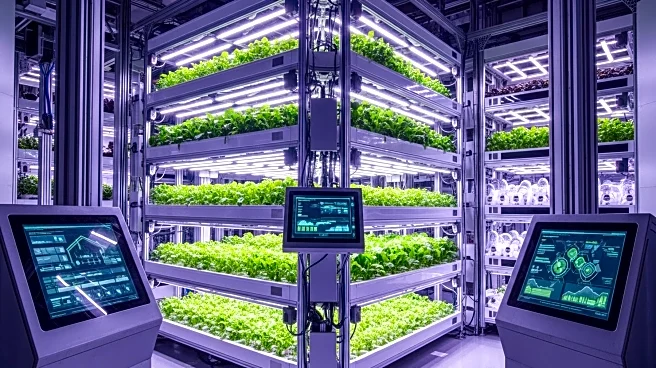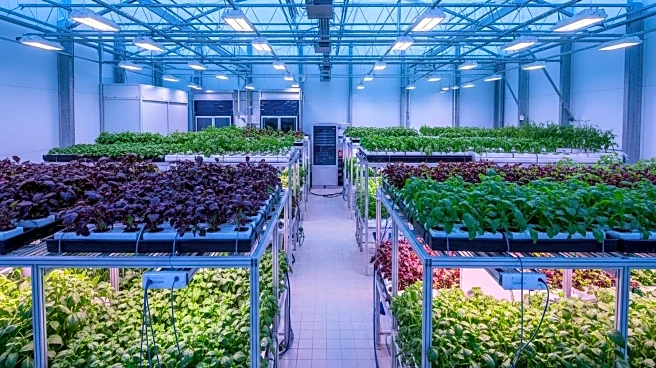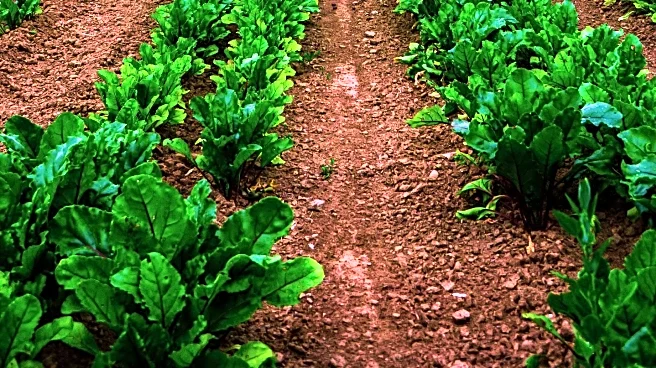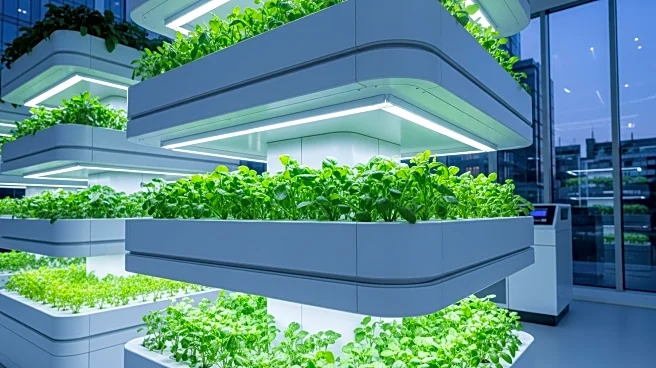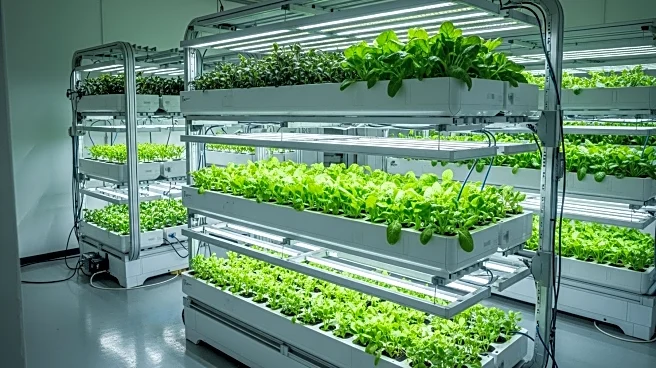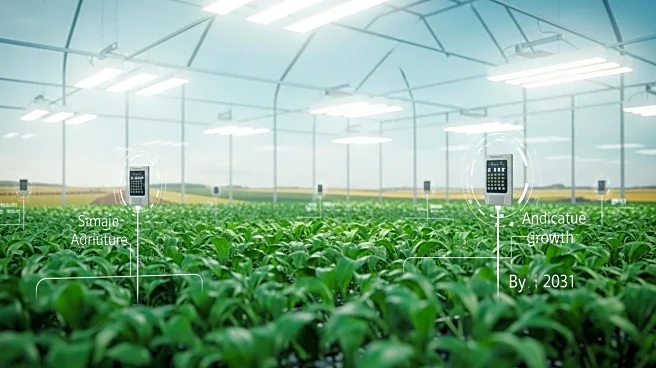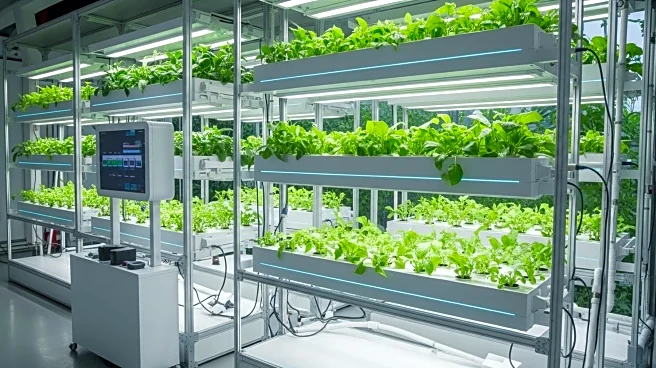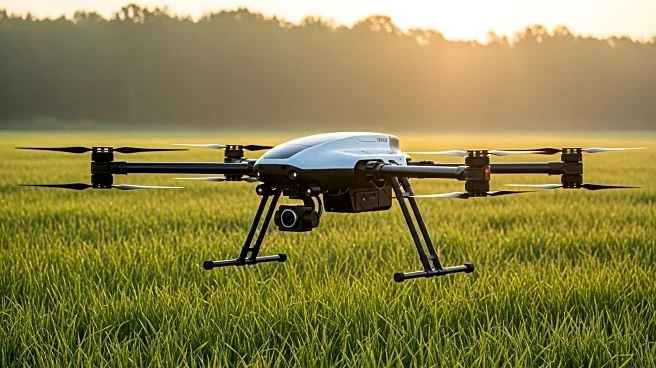What's Happening?
The urban farming market in the United States is experiencing significant growth, driven by technological advancements and increased adoption of innovative farming methods. According to recent reports, the market value rose from $148.24 billion in 2022 to $160.43 billion in 2023. This growth is attributed to the rising demand for advanced farming technologies that offer higher yields in shorter periods. Key players in the industry, such as UrbanFarmers AG, AeroFarms, and Gotham Greens, are leading the charge with initiatives that connect farmers with consumers and transform urban spaces into productive food-growing areas. The hydroponics segment, in particular, has seen expansion, growing from $47.75 billion in 2022 to $48.47 billion in 2023, as global adoption increases.
Why It's Important?
The rapid growth of the urban farming market is crucial for addressing food security challenges posed by the increasing global population, projected to reach 9.1 billion by 2050. This demographic shift necessitates a 25-70% boost in food production, making urban farming a vital component of future agricultural strategies. The adoption of advanced technologies in urban farming not only enhances productivity but also supports sustainable practices, reducing the environmental impact of traditional farming methods. As urban areas continue to expand, the integration of farming within city landscapes offers a solution to food supply issues while promoting local economies and community engagement.
What's Next?
The urban farming market is expected to continue its upward trajectory, with projections indicating substantial growth between 2025 and 2032. As key players adopt new strategies and technologies, the market is poised to expand further, potentially reaching $311.24 billion by 2032. Stakeholders, including policymakers and industry leaders, are likely to focus on enhancing infrastructure and support for urban farming initiatives. This could involve increased investment in research and development, as well as the implementation of policies that encourage sustainable urban agriculture practices. The continued collaboration between technology providers and urban farmers will be essential in driving innovation and meeting future food production demands.
Beyond the Headlines
Urban farming not only addresses food security but also contributes to environmental sustainability and community development. By integrating green spaces into urban areas, these initiatives can improve air quality, reduce urban heat, and foster biodiversity. Additionally, urban farming can serve as a platform for education and social engagement, offering opportunities for community members to learn about sustainable practices and participate in local food production. As cities strive to become more resilient and self-sufficient, urban farming represents a critical step towards achieving these goals.

